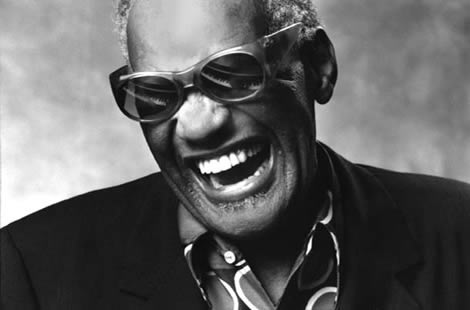My job has afforded me numerous opportunities to travel. Not the funeral parlour one. Not the tennis club one. And certainly not the local, small-town mobile disco DJ. My real job as an architect has provided these opportunities. At last count, I’ve visited thirty-eight countries, most of them through work. My initial shock at the level of poverty witnessed in many of these places has never really left me. But generally travel has always been enriching.
Amongst the more memorable of these was a week in Soweto, Johannesburg assisting with the redesign of the massive Baragwanath Hospital. I was fortunate enough to shake the hand of Desmond Tutu during that one. For similar project reasons, I spent a few nervous weeks in Amman, Jordan at the start of the second Gulf War. In Tripoli, I was within ten feet of Gaddafi, when no-one could’ve guessed what the future held for him. I was in New York the day Frank Sinatra died and witnessed the illumination in blue of the Empire State Building as a tribute to him, having earlier eaten with American work colleagues in Frank’s favourite restaurant in Little Italy. Didn’t meet him obviously, but his presence was tangible.
Although no celebrities were involved – or harmed in the telling – I recall spending an absolutely miserable two days in Rae Barelli following a 14 hour train journey from Delhi. When I had been informed hat the best way to travel was on an overnight ‘sleeper’, I had a vision of the Indian Orient Express. An effusive and attentive conductor would show me to my luxurious cabin before escorting me to a dining car where I might possibly have been forced to break with tradition and wear a tie. A tuxedo clad pianist would play in the corner and, following a good nights sleep an immaculate waiter with a curly waxed moustache would bring a tray of tiffen in the morning.
These things might happen in the rarefied company Michael Palin keeps; however, this sleeper was more akin to a collection of prison cells on wheels. The typical carriage had a passageway to one side of a six person open cell. The seats on either side were the lowest bunks, the backs of these seats folded up held in place by chains to form the middle bunks and the luggage rack at the top was where the remaining two slept. To make matters worse on the other side of the passageway a further two beds were arranged in a parallel orientation. There were ten of these cells in each carriage. A squatting, hole-in-the-floor toilet, with a clear view of the tracks underneath, was at the end of each carriage. Ours had no door. This was also the extent of any air conditioning.
We arrived in darkness and headed for a tourist dormitory where we’d be able to get changed, although disappointingly there was no water to get showered. Rae Barelli looks worse in daylight and near 40 degree heat. Emaciated cattle just wandered about aimlessly. Given how sacred they are in India, and how they must count among the few possessions people have, I expressed surprise at this. A local told me that no matter how far they wandered, they would always make their way back home. Homing cattle, eh?
A far more enjoyable trip was to a design conference for which I had contributed a paper. It took place in Montreal in the summer of 2003. Montreal was chosen as the venue for bi-annual World Health & Design Conference to coincide with the unveiling of designs for two major new hospitals. Politically, this was a significant thing for Canada as the hospitals would be the vanguard for the country’s new Public Private Procurement route, copied in the main from the one that had been the subject of much controversy in the UK for the previous ten years.
The conference was generally unremarkable, the designs were a bit pedestrian and the delegate numbers dramatically down due to concerns over that summer’s SARS virus which had badly affected Toronto. I wasn’t aware of it before travelling but my hotel was the very epicentre of the Montreal Jazz Festival – taking place simultaneously. This to me became infinitely more interesting than the poorly attended conference for which I was actually there. It took on a whole new level of surrealism when I found myself sharing a lift with the legendary Ray Charles.
The Hyatt Regency Hotel on the corner of Rue Jeanne-Mance and Rue St.Catherine was the favoured reside of most of the performers. At breakfast on my first full day there, I spotted Elvis Costello in pork pie hat, with Jerry Garcia-style beard and surrounded by entourage. Natalie Merchant, singer with the American group 10,000 Maniacs was at the next table but sitting on her own reading a newspaper. Jeff Tweedy from Wilco – a band I liked a lot – was alone drinking coffee at a table over in the corner. There was a general hubbub around the whole dining and reception area but as Jeff was isolated from it somewhat, I plucked up the courage to go over and talk to him. I was (and remain) a huge admirer of Elvis Costello but mindful of the old adage advising that it might be better not to meet your heroes – a maxim reinforced by a much earlier meeting with Paul Weller – I left him and his cohorts to their cornflakes and zeroed in on Jeff.
In our brief discussion, Jeff was courteous but guarded. He didn’t offer a seat and I remained standing. Constantly biting his nails and cuticles, he avoided eye contact but didn’t alter his body shape to suggest that I should leave him alone. He responded to my promptings about the differences between American and British Music and why groups like his, although resolutely American often fared better in the UK. I asked about music he currently liked and amidst a collection of groups I’d never heard of and now can’t even remember, he suggested I check out a group called Smog.
I left Jeff to what remained of his fingernails; wishing him well for Wilco’s festival gig that night and vowing to seek out the recorded works of Smog. As I headed towards the second floor foyer to catch the lift down to street level I caught sight of a slightly built man sandwiched between two massive minders and aiming for the lift some way in front of me. All three were black and dressed exclusively in black. The smaller man had on a heavy coat with a fur lined collar. He wore gloves and a black silk scarf could be observed bordering the internal edge of the fur. This was remarkable for a number of reasons but the most immediate was that in the late June of 2003, Montreal was sweltering. I instantly assumed that this level of inappropriate dress was the reason for the attention he was drawing from people in the foyer. When he was assisted into the lift and turned around to face me by the two giant bookends, I was astonished to see that it was Ray Charles. At the time though, I was so astonished I couldn’t recall his correct name. The doors of the lift closed with me on the inner side of them, facing the three men. I felt compelled to speak and the antiquated nature of the lift itself provided me with the time to.
‘Lord Charles, I’m really thrilled to see you’.
Not, unfortunately, ‘Mr. Charles…’, and any reference to seeing anything was immediately regretted as a major foot-in-mouth moment.
‘Yuh-huh, bo. Hmmm.’ At least, I think that’s what he said.
The only other response was from Burly Dude Left as I looked at them.
‘Don’t crowd Mr. Ray….!’
The voice that delivered this instruction had a baritone much deeper than Smog’s singer, Bill Callahan. It occurred to me that the only people actually crowding Mr. Ray were Humpty and Dumpty either side of him. Later, though – and after I’d respectfully stood aside to let them exit the lift on the short journey to the regulation black limousine that waited for him on Rue Jeanne-Marche – I winced at the realisation that I’d just linked one of the greatest musical figures in history to a wooden, two-foot-tall pissed up, pin striped, public school dummy.
Ray Charles died almost a year to the day after our briefest of flirtations in the lift of the Montreal Hyatt Regency. Every time I think of that trip, it amuses me to speculate that Brother Ray’s dying words might have been,
‘Despite all tha’ accolades, tha’ Grammys, tha’ lives ah’ve touched with ma music and ma determination to overcome tha’ things that woulda held mos’ people back …Ah only wish ah coulda stepped outta Ray Alan’s shadow…!’
I doubt that he did though.
The record store faced the main outdoor performance stage in Rue St.Catherine in a perfect location to benefit from the passing trade of the festival goers. As the festival progressed it became something of a shrine drawing all manner of pilgrims in during a virtual 24 hour operation. CDs and the occasional vinyl product were absolutely flying off its racks. Queues to the tills were snaking across every available square foot of floor space. The buzz in the shop was truly amazing. The only other time I’ve experienced anything like it was when I finally got to the vinyl-junkie Mecca of the much bigger Amoeba Records in Haight-Ashbury, San Francisco; truly one of the greatest places on earth.
I could have returned home from Montreal with more than I did but faced with a choice of virtually limitless possibilities, my brain started racing so fast that I couldn’t focus. I desperately tried to recollect lists of rare or hitherto unavailable records I’d made for just such circumstances, but nothing would come. Too much choice, too little time. So I deferred to Jeff Tweedy and headed for the racks marked ‘Rock/Pop’ and ‘S’. There were a few Smog CD’s but on the basis of the sleeve design and its amusing title, I choose ‘Dongs of Sevotion’.
It was a week or so and 3,000 miles later before I was able to listen to it properly and in truth it didn’t make much of an initial impression. The acquisition of as much music as I’ve managed over the years means that anything new has to be relatively immediate to stand a fighting chance of repeated plays. Most are flavour of the moment, good for some initial plays in the week of purchase before fading, to be replaced by a newer, fresher sound only days later. Only a couple spring to mind where I haven’t even managed to make it to the end of the recording but they are balanced by those select few which I’ve returned to after a period of ambivalence only to be absolutely astounded by them months down the line. I believe the music industry terminology for such recordings is ‘growers’. ‘Dongs of Sevotion’ is one that fits this description for me (and for the benefit of record ‘Spring Hill Fair’ by the Go-betweens is another).
When I consider both now, life would have felt less complete without them. They feel to me like they were cut from the same intense, brooding cloth. Late night records to be listened to in a contemplative mood. Not pitch perfect productions by any means but possessing enough lyrical integrity to reward repeated listens. Especially ‘Dress Sexy at my Funeral’; the second song on the Smog album and its absolute highpoint. It has a laconic, Velvet Underground groove over which Callahan calmly and unemotionally exhorts his wife to celebrate his life by recalling their best times together, particularly the most intimate ones.
‘Tell them about the time we did it, on the beach with the fireworks above us,
On the railroad tracks, with the gravel in our backs,
In the back of a crowded bar,
And in the graveyard where my body now lies’.
It’s a joyous commemoration of love and life tinged with a palpable melancholy (naturally, given the beyond the grave narration). It also has a darker hint that their life together wasn’t altogether perfect.
‘Dress sexy at my funeral my good wife, for the first time in your life’
The perfect love song.



